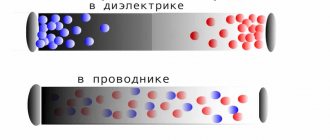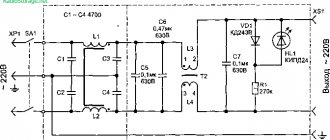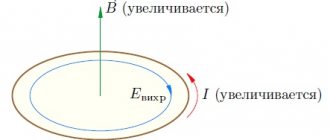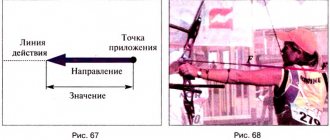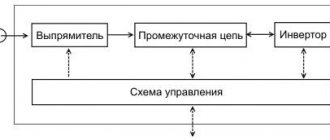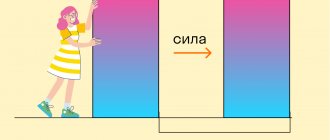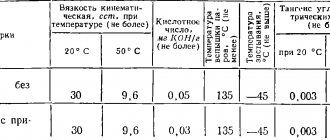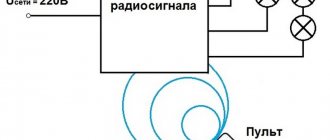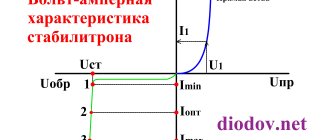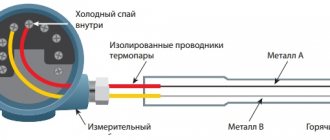In the dictionary Dictionary of foreign words
y, w.
1. A drawing showing the structure of something. or the relationship of parts of something. S. device. S. railway tracks. Circuit - related to the circuit, circuits.||Cf. GRAPH" title='GRAPHIC, GRAPH is, what is GRAPHIC, GRAPHIC interpretation'>GRAPH I, DIAGRAM" title='CHART, DIAGRAM is, what is DIAGRAM, DIAGRAM interpretation'>DIAGRAM, KROKI" title='CHART, KROKI is , what is KROKI, KROKI interpretation'>KROKI, PLAN" title='PLAN, PLAN is, what is PLAN, PLAN interpretation'>PLAN.
2. Presentation, description, depiction of something in its main features. General s. events.
3. An abstract and simplified image of something, a general ready-made formula. The play does not have characters, but patterns.
Share the meaning of the word:
Electrical diagrams. Types of circuits
Hello Habr! More often, articles provide colorful pictures instead of electrical diagrams, which causes disputes in the comments. In this regard, I decided to write a short educational article on the types of electrical circuits classified in the Unified System of Design Documentation (ESKD)
.
Throughout the entire article I will rely on the ESKD. Let's consider GOST 2.701-2008 Unified System of Design Documentation (ESKD).
Scheme. Types and types. General requirements for implementation . This GOST introduces the concepts:
- type of circuit
- a classification grouping of circuits, distinguished according to the principle of operation, the composition of the product and the connections between its components; - scheme type
- a classification grouping distinguished based on their main purpose.
Let's immediately agree that we will have only one type of circuit - an electrical circuit (E)
. Let's figure out what types of circuits are described in this GOST.
| Circuit type | Definition | Circuit type code |
| Structural diagram | A document defining the main functional parts of the product, their purpose and relationships | 1 |
| Functional diagram | A document explaining the processes occurring in individual functional circuits of the product (installation) or the product (installation) as a whole | 2 |
| Schematic diagram (complete) | A document that defines the full composition of elements and the relationships between them and, as a rule, gives a complete (detailed) understanding of the principles of operation of the product (installation) | 3 |
| Connection diagram (installation) | A document showing the connections of the component parts of the product (installation) and defining the wires, harnesses, cables or pipelines by which these connections are made, as well as the places of their connections and input (connectors, boards, clamps, etc.) | 4 |
| Connection diagram | Document showing external connections of the product | 5 |
| General scheme | A document defining the components of the complex and their connections to each other at the site of operation | 6 |
| Layout diagram | A document defining the relative location of the components of the product (installation), and, if necessary, also bundles (wires, cables), pipelines, optical fibers, etc. | 7 |
| Combined scheme | A document containing elements of different types of circuits of the same type | 0 |
| Note - The names of the types of circuits indicated in brackets are established for electrical circuits of power structures. | ||
Next, we will consider each type of circuit in more detail as applied to electrical circuits.
Main document: GOST 2.702-2011 Unified system of design documentation (ESKD).
Rules for executing electrical circuits .
So, what is it and what do these electrical circuits “eat” with? GOST 2.702-2011 will give us the answer: Electrical diagram
is a document containing, in the form of conventional images or symbols, the components of a product operating with the help of electrical energy, and their interconnections
.
Depending on the main purpose, electrical circuits are divided into the following types:
Electrical structural diagram (E1)
The block diagram shows all the main functional parts of the product (elements, devices and functional groups) and the main relationships between them. The graphical construction of the diagram should provide the best idea of the sequence of interaction of functional parts in the product. On the interconnection lines, it is recommended to use arrows to indicate the direction of the processes occurring in the product. An example of an electrical structural diagram:
Electrical functional diagram (E2)
A functional diagram depicts the functional parts of a product (elements, devices and functional groups) participating in the process illustrated by the diagram, and the connections between these parts. The graphical construction of the diagram should give the most visual representation of the sequence of processes illustrated by the diagram. An example of an electrical functional diagram:
Electrical circuit diagram (complete) (E3)
The circuit diagram shows all the electrical elements or devices necessary for the implementation and control of established electrical processes in the product, all the electrical connections between them, as well as the electrical elements (connectors, clamps, etc.) that terminate the input and output circuits. The diagram may depict connecting and mounting elements installed in the product for structural reasons. The circuits are performed for products in the off position. An example of an electrical circuit diagram:
Electrical connection diagram (installation) (E4)
The connection diagram should show all devices and elements included in the product, their input and output elements (connectors, boards, clamps, etc.), as well as connections between these devices and elements. The location of graphic symbols of devices and elements on the diagram should approximately correspond to the actual placement of elements and devices in the product. The arrangement of images of input and output elements or terminals within graphic symbols and devices or elements should approximately correspond to their actual placement in the device or element. Example of electrical connection diagram:
Electrical connection diagram (E5)
The connection diagram must show the product, its input and output elements (connectors, clamps, etc.) and the ends of wires and cables (stranded wires, electrical cords) connected to them for external installation, near which data on connecting the product (characteristics) should be placed external circuits and (or) addresses). The placement of images of input and output elements inside the graphic designation of the product should approximately correspond to their actual placement in the product. The diagram should indicate the positional designations of the input and output elements assigned to them on the circuit diagram of the product. Example of electrical connection diagram:
General electrical circuit (E6)
The general diagram shows the devices and elements included in the complex, as well as the wires, bundles and cables (stranded wires, electrical cords) connecting these devices and elements. The location of graphic symbols of devices and elements on the diagram should approximately correspond to the actual placement of elements and devices in the product. Example of a general electrical diagram:
Electrical layout diagram (E7)
The layout diagram shows the component parts of the product, and, if necessary, the connections between them - the structure, room or area on which these components will be located. Example of electrical layout:
Combined electrical circuit (E0)
This type of diagram shows various types that are combined with each other in one drawing. An example of a combined electrical circuit:
PS
This is my first article on Habré, don’t judge strictly.
Members of the sentence: where to start?
The first place to start is to define what a proposal is. These are several words that are connected logically and intonationally. Most importantly, there is a grammatical basis, which consists of a subject and a predicate. The first main term denotes an object or person who performs some action. The predicate will tell about it.
You may be interested in: Minsk Energy College - a place to obtain a sought-after profession
Another important point is the definition of the word with which the sentence begins, as well as the total number of words. For example, “Mom is reading a book.” The first word in the sentence is “mother”, and there are three words in total. Now we need to find the grammatical basis. The first question is: “Who?” This means we are talking about an animate object. Second question: “What does it do?” It refers to the verb. It remains to define the word “book”, which is a minor member of the sentence, an addition.
Word tools for creating diagrams yourself
To create diagrams in Word yourself, you can use two tools that are already present in the MS Office Word package:
- Figures.
- SmartArt.
Both tools are located in the “Insert” tab. Now let's take a closer look at how to work with each.
How to create a diagram using the Shapes tool
To create a diagram using the Shapes tools, you need to do the following:
- Think about what your diagram should look like.
- Select the desired shapes yourself and manually place them on the page.
- Connect with arrows or lines - these are also available in Shapes.
- Make the necessary inscriptions using “Drawing Tools” - “Format” - “Adding an Inscription”.
Diagram created using the Shapes tool To make it look beautiful, it is better to choose a transparent outline for the inscriptions. And in shapes, change not only the fill, but also the outline color. By default it is blue.
Algorithm for creating a proposal diagram
- Read the proposal carefully.
- Find the subject and predicate - the grammatical basis of the sentence. There can be several grammatical bases, in this case the sentence is complex. Underline the subject with one line and the predicate with two lines.
- Determine whether the sentence is simple or complex.
- Mark the boundaries of sentences with vertical lines. Mark the boundaries of simple sentences.
- For complex sentences, determine the conjunction: compound or complex sentence. Coordinating or subordinating conjunction.
- Highlight the adverbial and participle phrases, if any.
- Find the minor members of the sentence. Underline them like this:
- definition – wavy line
- addition – dotted line;
- circumstance – dot, dash, dot, dash;
- adverbial phrase – dot, dash, dot, dash, highlighted on both sides by vertical lines;
- the participial phrase is a wavy line, distinguished by vertical lines on both sides.
World market
In 2022, the global integrated circuit market was estimated at $700 billion.[24]
The main producers and exporters are in Asia: Singapore ($115 billion), South Korea ($104 billion), China ($80.1 billion) and Malaysia ($55.7 billion). The largest European exporter is Germany ($1.4 billion), the American exporter is the USA ($28.9 billion). The largest importers: China ($207 billion), Hong Kong ($168 billion), Singapore ($57.8 billion), South Korea ($38.6 billion) and Malaysia ($37.3 billion).
Legal protection
Russian legislation provides legal protection to integrated circuit topologies. The topology of an integrated circuit is the spatial-geometric arrangement of the set of elements of an integrated circuit and the connections between them recorded on a material medium (Article 1448 of the Civil Code of the Russian Federation).
The author of the integrated circuit topology owns the following intellectual rights:
- exclusive right;
- copyright right.
The author of the integrated circuit topology also has other rights, including the right to remuneration for the use of the service topology.
The exclusive right to the topology is valid for ten years. During this period, the copyright holder may, at his request, register the topology with the Federal Service for Intellectual Property, Patents and Trademarks.[25]
Algorithm for constructing a circuit
“Make a sentence diagram,” - tasks in 1st grade most often sound like this. It's not difficult to do them. It is enough to follow a simple algorithm. The main rule is as many words as there are as many lines. How many words are capitalized, so many vertical lines.
Students follow this algorithm:
- Read the proposal.
- Establish meaning.
- They identify spellings in the form of words that are written with a capital letter.
- Determine the type of sentence: narrative, reasoning, question. The placement of punctuation marks depends on this.
- If there is dialogue, put a dash.
- Count the number of words, including prepositions, conjunctions and particles.
After this, you can draw the diagram in your notebook. It is important not to forget about all spellings.
How to create a complex sentence diagram with multiple clauses
In order to correctly display sentences that have several subordinate clauses, a vertical diagram is used:
“We learned that a hurricane was coming that could destroy everything on the coast.” (sequential submission):
“When we were already approaching the city, Daniil squinted to get a better look at the surroundings.” (parallel submission):
“We are very glad that you came, that you are with us today, that you like it here.” (homogeneous submission):
The main purpose of this article is to help you remember school rules for the Russian language and remind you of the main points, observing which you can easily construct a diagram of any sentence.
Since you are here, you are probably a school student who needs to draw up a sentence outline. This is standard homework. The diagram is usually done as part of the syntactic parsing of a sentence, but it can also be done separately.
I suggest you take a test - answer five questions according to the sentence pattern.
[quiz-cat >Well, what did you get? And now the explanations.
Rules for reading diagrams and working on them
In order to quickly and correctly read electrical diagrams, you need:
- Know the symbolic graphic designations of elements: capacitors, resistors, inductors, relays, motors, switches, batteries, lamps and others.
- Be able to mentally separate complex circuits into simple ones, and use additional structural and functional types of circuits. You should study the drawings systematically, in accordance with the logic of the device. If documents contain links to other sources, you should familiarize yourself with them.
- Studying the operation of the circuit may require constructing diagrams of the interaction of individual sections of the circuit, reflecting the order of operation of telemetry, automation, and protection.
This information will help assess the likelihood of element malfunctions, lack of proper contacts, or false connections.
Display in spelling schemes
Before they create a sentence diagram in 1st grade, they first learn spelling patterns. The first is the capital letter in proper names. The names of cities, names of people, names of animals begin with it. In diagrams it is indicated using a vertical bar. They act as a visual aid, with the help of which they consolidate already acquired knowledge.
- Petya and Vanya will go to their grandmother in the summer. I_____ _ I_____ ____ _____ __ _____.
- Alena loves candy very much. I____ _____ _____ ____.
- Dad helped Rita and Kostya do their homework. I____ ____ I____ _ I_____ _____ ____ ____.
- Moscow and Volgograd are located in Russia. I___ _ I____ ____ __ I____.
Later, children learn about such a concept as dialogue. In the alphabetic period, the first knowledge about direct speech is laid. Students learn that sentences begin with a capital letter, and each new line is preceded by an unusual dash sign.
-Who ate all the candy? — I___ __ ___ ___?
Children already in the 1st grade are drawing up a sentence diagram with all punctuation marks. This will help you write words correctly, and when reading, highlight punctuation marks using intonation.
Information models on graphs
A visual means of representing the composition and structure of a system is a graph . A graph consists of vertices connected by lines. If the line is directed (with an arrow), then it is called an arc ; a non-directional line (without an arrow) is called an edge . A line leaving and entering a certain vertex is called a loop. Vertices can be depicted as circles, ovals, dots, rectangles, etc.
If the objects of a certain system are represented by vertices, and the connections between them are represented by lines, then we will obtain an information model of the system under consideration in the form of a graph.

